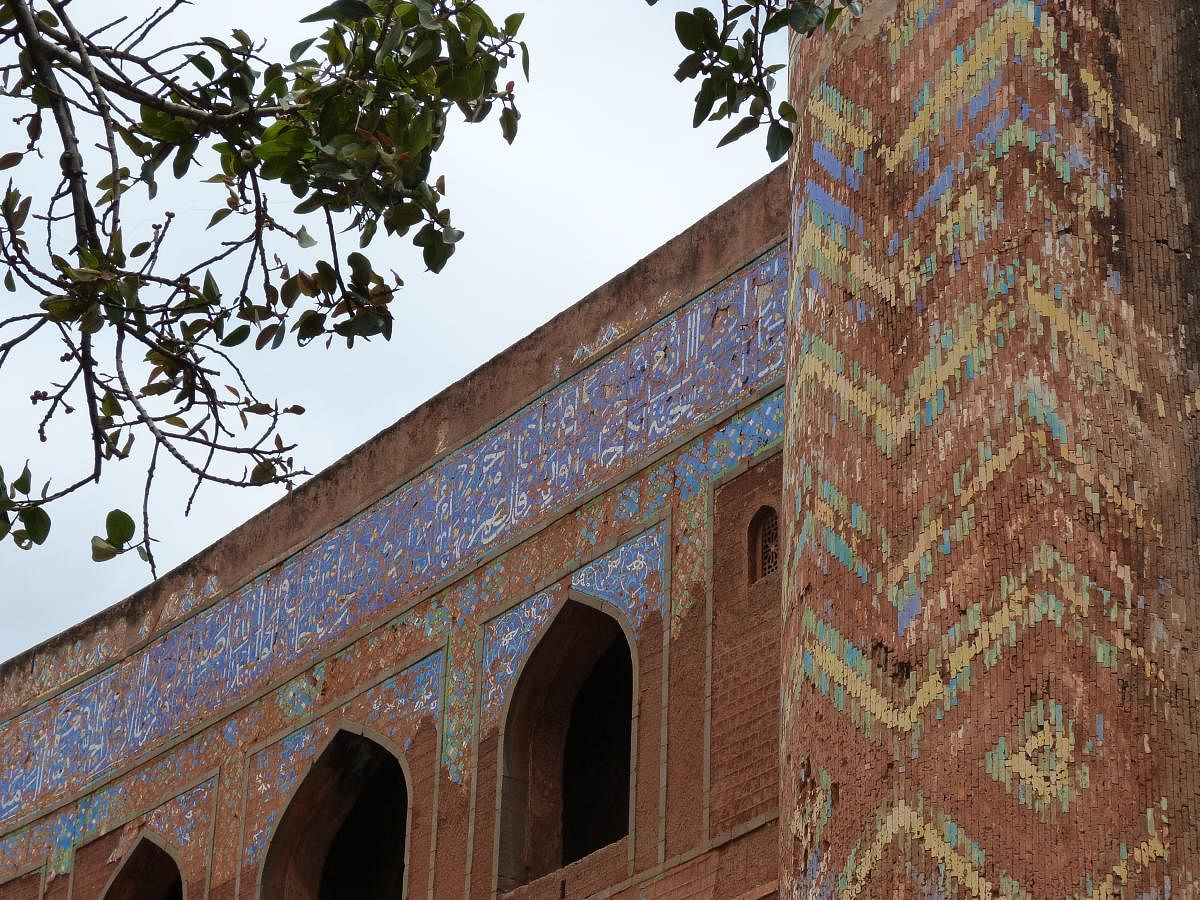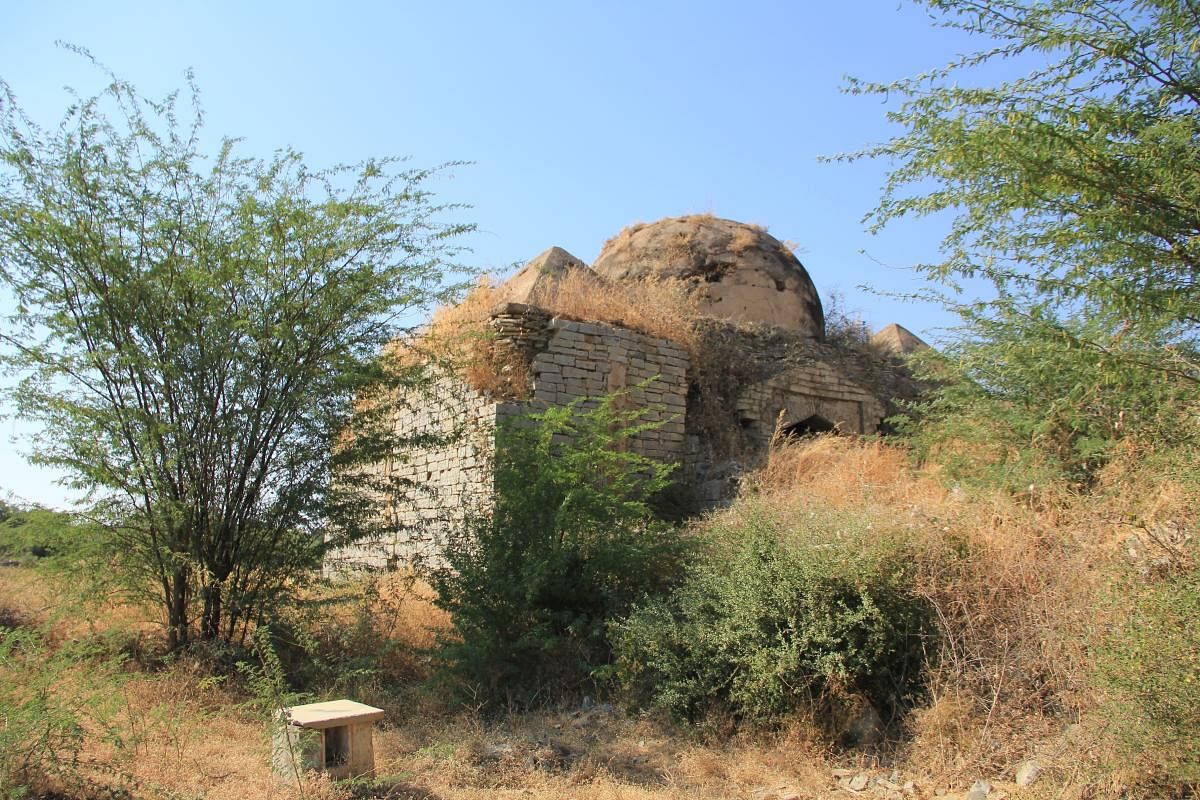
The 1300s was a turbulent time in the Deccan. Muhammad bin Tughluq made his move to Daulatabad and back and his attempts to bring parts of south India under his control succeeded only fleetingly. In the wake of all this tumult, the Bahmani kingdom was established that eventually spawned five dynasties. In a recent talk on the Islamic heritage of the Deccan, renowned architect and archaeologist George Michell spoke about the remarkable monuments built by the Bahmanis in north Karnataka.
Kalaburagi, the first Bahmani capital, is a good place to begin our story. The most famous monument here is the Jami Masjid, built in 1367, a large congregational mosque, one of the few in India without a courtyard. Michell and his colleagues believe that it was originally an audience hall. Also unusual is the Bala Hisar — a
massive, brooding windowless stronghold in the fort.
A long, straight street
Kalaburagi’s least noticed Bahmani structure is perhaps Bazaar Street in the fort, which Michell characterises as one of the earliest of its kind in India. The long, straight street begins a short distance from Bala Hisar and ends near Hathi Gate in the west. It is lined on both sides with a continuous row of small, square rooms, each capped with a pyramidal roof. These rooms are now used as dwellings which means there are cement blocks strewn about and cables and clothes hanging higgledy-piggledy outside. But Bazaar Street, though unrecognisable as one, survives intact. However, few realise its place in our heritage.
The royal necropolis called the Haft Gumbad, or Seven Tombs, is interesting to see for the evolution of Islamic architecture in the Deccan. The oldest tomb here is of the third Bahmani ruler Mujahid Shah. A squat, square structure with sloping walls topped with battlements and bereft of any decorative flourishes, it has the austerity and solidity of Tughlaq tombs – the Bahmanis did, after all, break away from them.
Mujahid’s successor, Dawood Shah ruled for just about a month in 1378 but invented a new style of tomb, comprising two similar, domed structures on a single basement, a style not seen anywhere outside Kalaburagi. The enlightened and eclectic Firoz Shah Bahmani who died in 1422 copied the double-chambered style but made his tomb much lighter on the eye. The black basalt door jambs reminiscent of temple pillars, the recessed arches bearing stucco floral work, and the chajjas borne on brackets that resemble those found in temples all become common features in later Bahmani architecture.
By far my favourite Bahmani site is Firozabad, the secondary capital and pleasure resort built by Firoz Shah. Firozabad is on the banks of River Bhima, about 30 km from Kalaburagi. The road leading off the highway to the village twists and turns past fields of cotton and eventually dwindles into a mud track. To one side of the path leading away from the river are mud-plastered houses with goats tethered in their yards near neatly-stacked piles of hay. On the other side are the ruins of Firoz’s medieval metropolis.
In 1398, Timur swept into Delhi, attacked it, defeated it, sacked it. Perhaps something stirred in Firoz Shah when he heard about the Tughlaq capital being vanquished. He began building Firozabad shortly after Timur’s raid on Delhi and it is as if he found a new muse. Gone are the thick sloping walls and low domes of the Tughlaqs. Firoz’s new city boasted soaring, vaulted gateways just like in Timur’s capital Samarqand.
But while Samarqand still shines, Firozabad has fallen on very hard times. Whether its decline started when the Bahmani capital moved to Bidar or whether it declined later is moot, but clearly, nature has crept in where humans have stepped out.
We had to clamber over village walls, scramble through a field and fight our way past thorny shrubs to reach some of the ruins.
Firozabad’s Timurid gateway stood forlorn amidst a sea of prickly bushes. The arch was cracking down the middle. Most of its plaster had fallen off, exposing jagged bricks like wrinkles on an ageing actor. Yet its monumentality was obvious. You could also still make out the Timurid lions, or perhaps tigers, on the spandrels – the first known use of animal motifs in Islamic architecture in India.
A little further, we espied pyramidal roofs and a dome peeping out of the wild vegetation. These were Firozabad’s hammams.
The floors were probably tiled earlier; today are covered with heaps of silt, bat droppings and other refuse. But look up at the ceiling and you can’t help but exclaim in wonder. Sunlight winks and sparkles through the regularly spaced, small holes in the roof, making it appear quite magical, almost like a bright starry night. How lovely it must have been to be a royal here, luxuriating in warm, perfumed water under a ‘starlit’ sky! Michell’s talk dwelt lovingly on these hammams, the first such structures to be built anywhere in India. Sadly, they may not survive much longer, being completely at the mercy of the elements and vandals.
When Firoz’s successor Ahmad Shah shifted the capital to Bidar, he too commissioned new Timurid-styled buildings. Artisans decorated his palace in Bidar with dazzling tilework of the kind in Timur’s cities of Herat and Samarqand. You can still see traces of this polychrome tile mosaic, including the lion-and-sun symbol on the Takht Mahal’s lofty arches except that here, in place of the Persian lion, we have a very clearly Indian tiger.
Apart from taking architectural inspiration from Persia, the Bahmanis also encouraged rich and educated Persians to move to their kingdom. If you walked the streets of Bidar in the 1400s, you would have heard Kannada, Dakhni and Telugu of course but also Persian, and even a smattering of Portuguese and Russian. Several people moved from Persia to make Bidar their home.
Three-tiered minaret
Most famous of these was Mahmud
Gawan, a merchant who came to Dabhol to sell jewels, silk and horses, and ended up becoming Prime Minister of the Bahmanis.
Gawan built an imposing 3-storey madrasa in 1472, with student rooms, staff rooms, lecture halls, a vast library and a prayer hall.
But buildings, like people, need attention to thrive. An accidental blast during the Mughal period followed by centuries of neglect has destroyed most of the building. Only a portion of the madrasa and one minaret still stand.
This three-tiered minaret’s lowest level has blue, white and yellow tiles creating a bold zigzag pattern all over it, a style that was very popular in Persia in the 1400s. There are also bands of blue and white tile mosaic on the madrassa’s façade, with floral designs and verses from the Quran. The recessed arches and trellis work create pleasing patterns of light and shadow. As Michell pointed out, here was a stunning masterpiece that could be compared with the best in the world.
A distinctive feature of Islamic architecture in north Karnataka is how the blending of cultures in this cosmopolitan crucible led to an architecture that is unique not just in India but also the world. Take for example the jewel-like Rangin Mahal in Bidar Fort, built by Ali Barid Shah in the 1500s. While the beautiful tile mosaics on some of its walls and the luminescent mother-of-pearl inlays on black basalt are Persian in style, its carved wooden pillars and brackets are clearly derived from local residential architecture.
After the Bahmanis splintered into five states, the Adil Shahis developed an architecture entirely their own. Many of their palaces, gardens and pavilions no longer exist but Vijayapura still has the maximum number of protected monuments of any Indian city. The Gol Gumbaz is Vijayapura’s most famous monument but a good place to end our tour is at Ibrahim Ra`1uza, the mausoleum of Ibrahim Adil Shah and his wife where you can truly appreciate how far-removed its petalled domes, carved brackets and its exquisitely carved stone screens are from early Bahmani monuments.
